

Age: 7
Sex: male
Date: 20 Oct 1963
Place: 83 Shakespeare Street, Chorlton on Medlock
David Charles Earp was found dead in a stairwell at 83 Shakespeare Street in Chorlton on Medlock on 24 October 1963.
A 67-year-old retired man was tried for his murder but acquitted at the Manchester Crown Court on Friday 13 December 1963.
Both David Earp and the retired man had lived in Shakespeare Street. David Earp was last seen playing near his home at 5pm on the Monday.
He had been missing for three days before he was found under some carpeting on a landing outside the man's room on 24 October 1963. When he was shown a photograph of David Earp, the man said:
David Earp had been previously examined by a psychologist in September 1963 and it was found that although he was seven years old, he was four years three months mentally and that therefore his intelligence quotient was 51, which meant he fell into the educationally sub-normal group.
He had been born on 13 November 1955.
On 21 October 1963 he had had a mid-term school holiday and later that night he was reported missing.
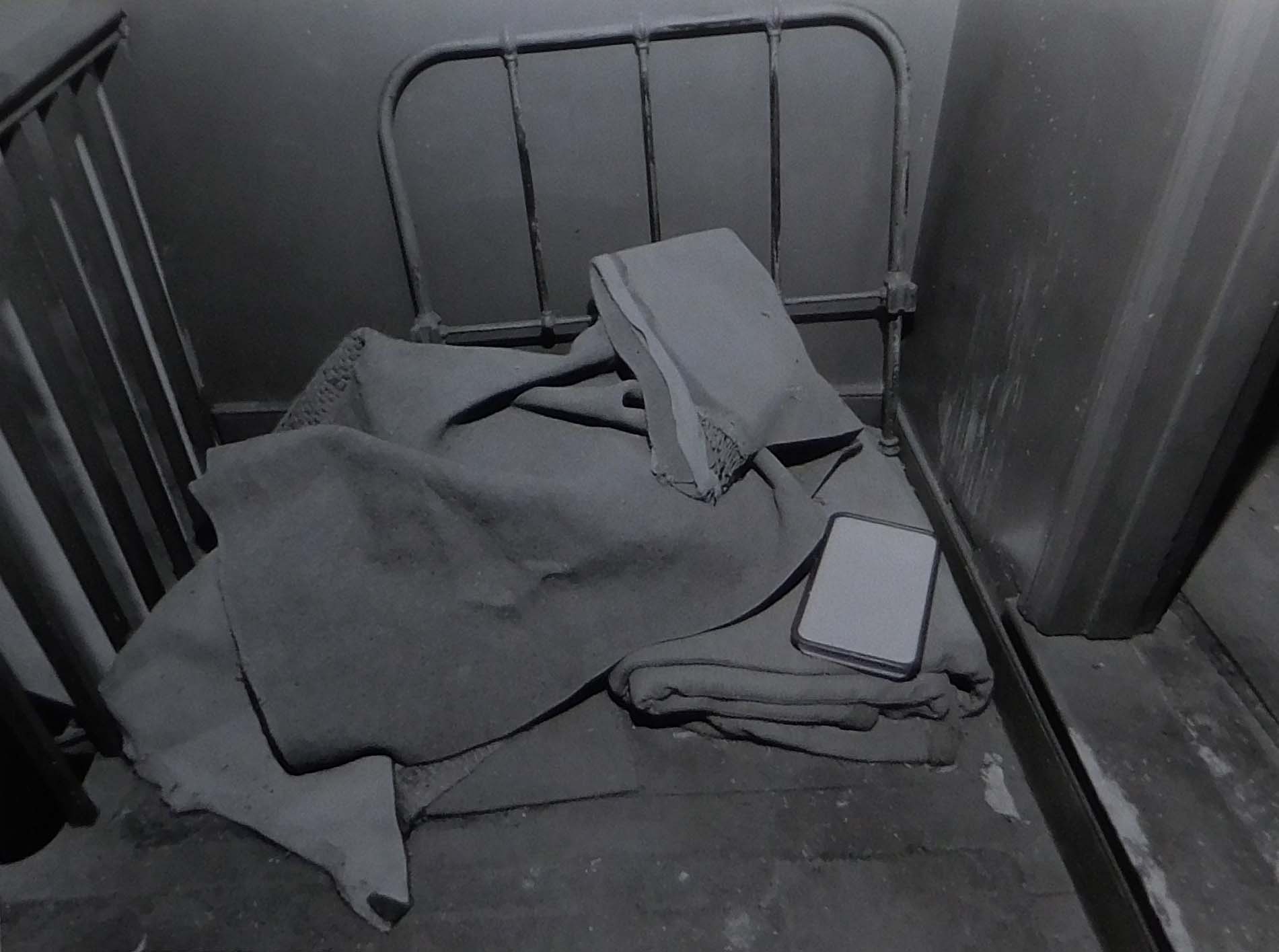
The police had searched the apartment house where the retired man had lived on 23 October using a torch on the unlit stairs on the second floor, but found nothing, however, the house was searched again the following day and David Earp's body was found under a pile of carpet in the same spot.
When the retired man was charged with murder, he said:
In his statement he said:
The property at 83 Shakespeare Street had been occupied by a number of people, with the three rooms on the ground floor occupied by an Indian family, the three rooms on the first floor occupied by three men, each with their own room, and the three rooms on the top floor occupied by another three men, including the retired man who occupied room 8. The landing where David Earp's body was found was immediately outside both rooms 8 and 9.
David Earp's Mother
David Earp's mother said that she lived with her three children in a ground floor furnished flat at 91/93 Shakespeare Street.
She said that on Monday 21 October 1963 that her children had been off school because of a mid-term holiday. She said that in the morning David Earp had been playing normally in and out of the house and that he had dinner at about 12.30pm, which included homemade chips. She said that after dinner he went out to play in the back.
She said that she received a visitor later in the afternoon about 4pm and that she let David Earp through to the front of the house to go into the street to play with some little Indian boys.
She said that she next saw him at about 4.30pm and that as a result of what he said to her that she gave him a piece of bread and butter, noting that she didn't give him any more at that time because his tea was nearly ready. She said that tea was going to be ready between 5pm and 5.30pm and that David Earp had been aware of that when he then went back out to play at 4.45pm after having his bread and butter.
She said that when tea was ready that she called her daughter but couldn't find David Earp and she went out into the back streets to look for him and continued to look until about 6.30pm. She said that after her daughter finished her tea that she sent her to the houses where David Earp was last seen playing and that after she came back without him that she went out herself again to look for him and later went to Longsight Police Station and reported him missing. She noted that she continued to look for him after having reported him missing.
It had been 7pm when David Earp's mother had reported him missing to the police.
After David Earp was found dead, she later identified David Earp's clothing as well as some toys. She said that on 18 October 1963 that she purchased two plastic chariots from Bailey's shop in Shakespeare Street and that she later found them on 22 October 1963 whilst clearing up David Earp's room, noting that one was broken and that one of the horses was missing, noting that she was later shown a horse by the police on 26 October that was similar to the one remaining in the toy chariot she found in the room.
She also identified a green Dinky toy as belonging to David Earp as well as a plastic toy known as a jack.
She said that on Monday 21 October 1963 that she had not given David Earp any chewing gum and that he had had no money with which to buy sweets if he had wished to.
She noted that as a result of the recent mental examination that David Earp had had that he was due to go to an open air residential school on the following Monday, 28 October 1963.
Unemployed Man
An unemployed man that had also lived at 91/93 Shakespeare Street said that on Monday 21 October 1963 he left his home address to go to the grocer's shop at 55 Shakespeare Street between 4.55pm and 5pm and that as he walked along the street towards the grocer's shop he saw David Earp standing outside the school medical clinic at 69 Shakespeare Street. He said that he had been looking across the road at the bonfire on the corner of Avon Street and Shakespeare Street and that as he walked passed him he spoke to him but that David Earp didn't answer, but kept on watching the bonfire.
He said that after he walked on a few paces that he turned to see if Shakespeare Street was going back to their house at 93, and saw that he was walking in that direction.
He said that he never saw him again after that.
He said that after going to the grocer's shop that he returned home along the same street and arrived home between 5.10pm and 5.15pm, noting that there was no sign of David Earp then.
Production Clerk
A production clerk that had lived at 9 Kirkstall Street in Ardwick said that he knew the retired man and would see him at the College Hotel at the corner of Brunswick Street and Oxford Road.
He said that he saw him there on Monday 21 October 1963 around 8.30pm, noting that he was there when he went in. He said that he had his dog with him at the time.
He said that he had not seen him there before on a Monday evening, noting that it was usually lunchtime that he saw him, although he noted that he had seen him there on an evening occasionally before. He said that he remarked to him, 'What are you doing here?', because he was sitting in a corner where another regular usually sat, but said that his reply was inaudible.
He said that the only thing he noticed about him was that he was a little flushed.
He added that he didn't know what time he left.
The production clerk noted that he had been in there every day because he had been off work for some months, and that the retired man was usually there around mid-day, and just occasionally in the evening.
Detective Constable
A detective constable with the Manchester City Police said that on the evening of Wednesday 23 October 1963 that he had been with another detective constable making enquiries along Shakespeare Street, trying to trace David Earp, and that they arrived at 83 Shakespeare Street at about 8pm.
He said that he first saw the Indian man that lived in rooms 1, 2 and 3 on the ground floor and then went upstairs to rooms 4, 5 and 6, noting that room 4 was locked. He said that he then saw the man from room 5 and went into his room and looked around, but saw no trace of David Earp there. He said that room 6 was also locked and that he then checked the bathroom and toilet by room 4.
He said that he then went upstairs and knocked at room 7 and spoke to the man there and looked around his room and under the bed, but found no sign of David Earp there and went on to room 8 which was occupied by the retired man. He said that his knock was not initially answered and so he knocked again, but that in-between knocks he looked at room 9, which was also locked.
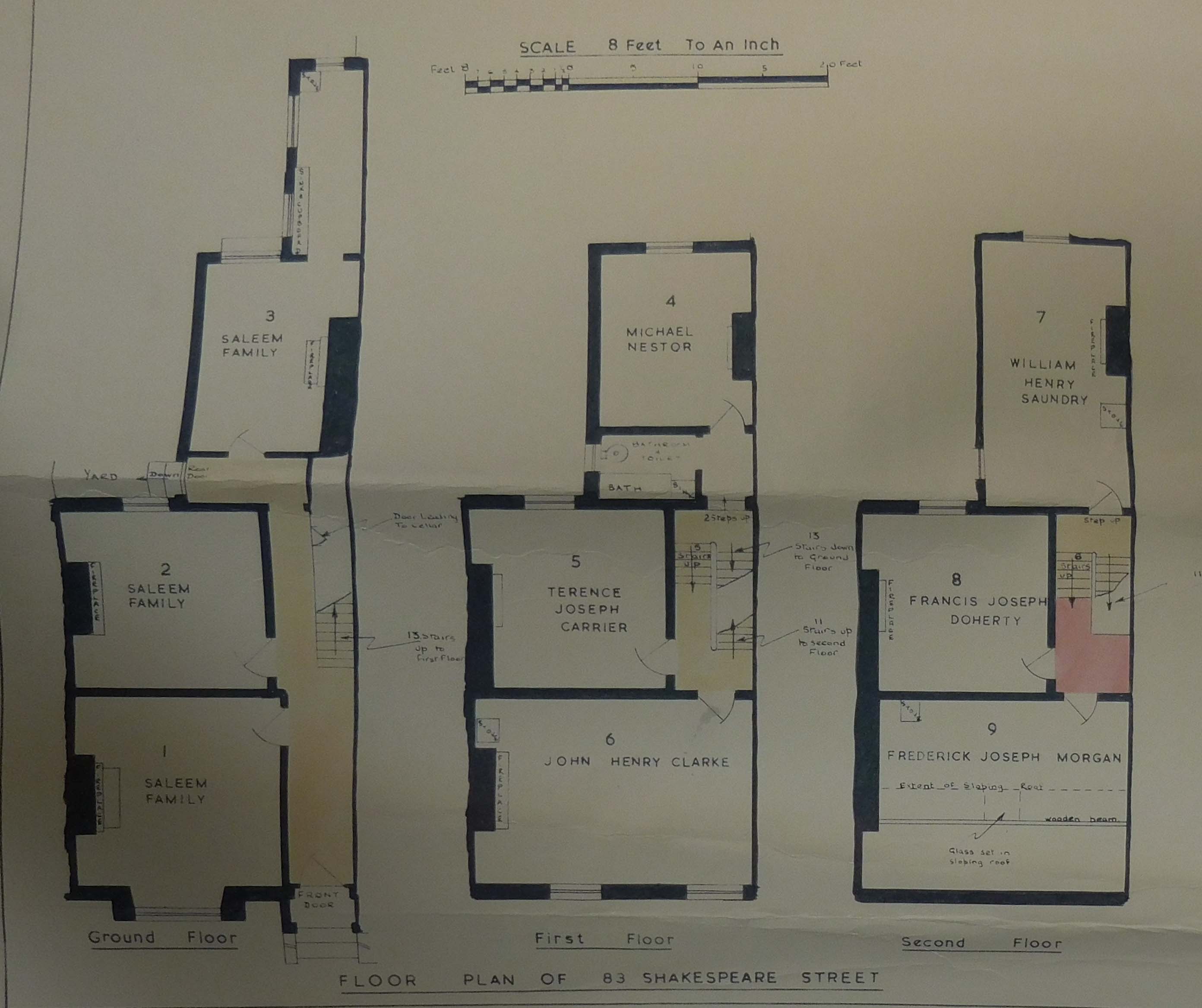
He said that after his second knock at room 8 that the retired man came to the door in his underwear.
He said that he then introduced himself and told him that he was making enquiries into the disappearance of David Earp, but couldn't remember what his reply was, but that he backed away towards his bed and sat on it. He said that he then stepped into his room and noticed that there was an Alsatian dog there attached by a piece of string to a table leg.
He said that having seen the dog there he pushed the door close and then looked under the bed but saw nothing there, noting that at that time the bed was away from the corridor wall. He noted that the bed had been in a very untidy condition and that the bedclothes were piled untidily on it.
He said that after looking underneath the bed that he walked towards the centre of the room and that the dog came sniffing towards him and that the retired man told him that the dog wouldn't bite him. He said that he then walked between the table and the bed and that as he did he noticed there was a white enamelled feeding dish, which was in his way and so he moved it under the table with his foot. He later identified the dish which was presented at the trial as exhibit 16.
He said that he didn't see any signs of David Earp in the room , but noted that he didn't look behind the dresser or the chest of drawers.
He said that he then asked the retired man to contact the police if he got to know anything about David Earp and said that he replied, 'Yes, sir'.
He said that he then left the room, but saw nothing on the landing as he did so that would require him to search it and then went down the stairs and left the house.
When he was cross-examined, he said that he didn't actually search room 8 thoroughly, noting that the retired man had done nothing to prevent him from doing what he liked, and that nor did the dog. He said that when he looked under the bed the retired man had been sitting on it and that he saw nothing suspicious, noting that if he had done he would have searched it.
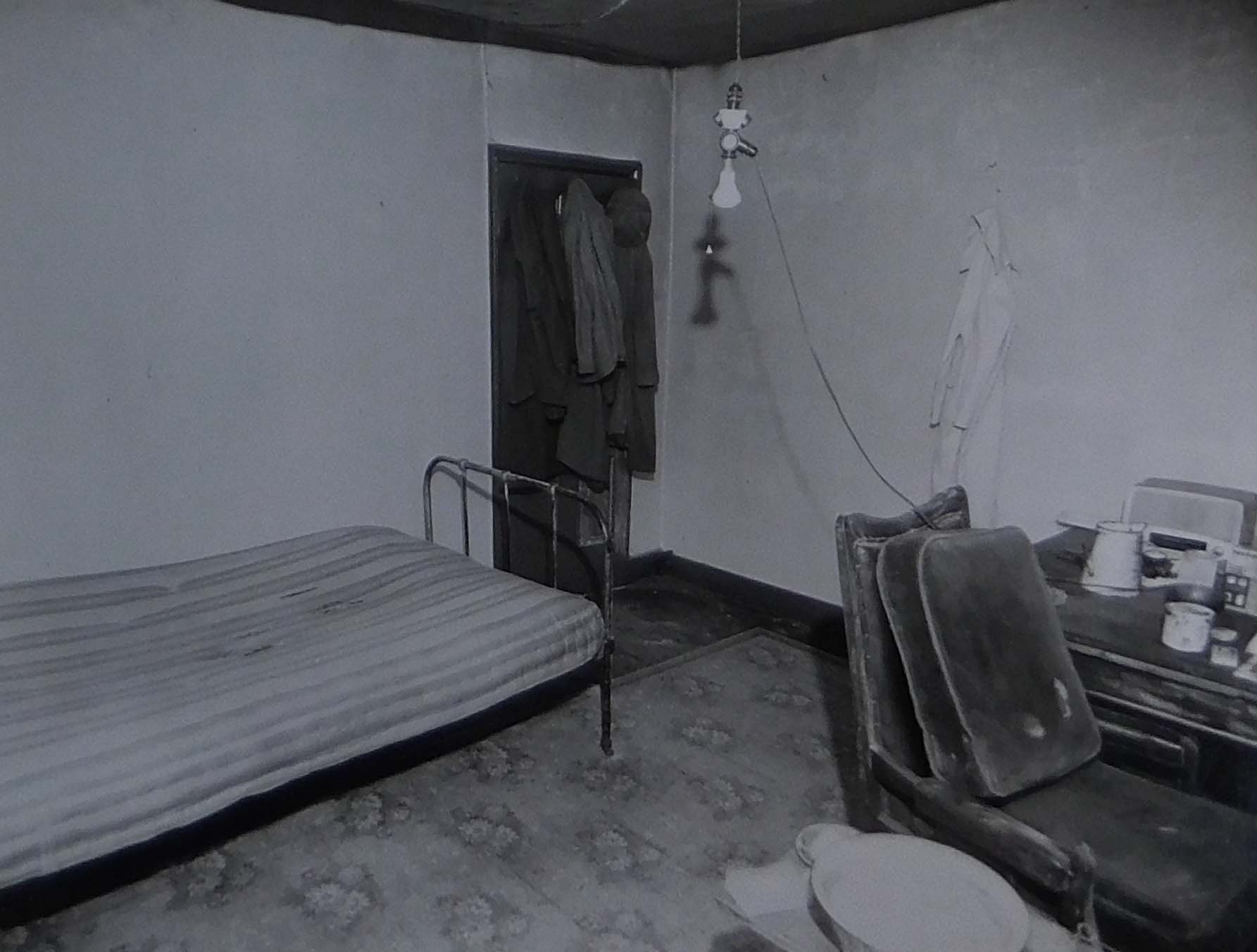
He noted that he didn't recall whether there had been anything in the feeding dish, and that neither did he recall seeing any carpets on his left and that he didn't notice the bed head on the landing, but noted that there was no light and he had used his torch.
Second Detective Constable
The second detective constable said that he had also gone to 83 Shakespeare Street on 23 October 1963 at about 8pm to make enquiries regarding David Earp. He said that he went into all the rooms on the ground floor as well as the cellar and back garden and saw the man in room 5 and then went on to room 7 on the second floor, knocking on the door and then went up a flight of six steps to room 8 and knocked on it. He said that whilst waiting for the door to be opened he glanced around the landing outside rooms 8 and 9, noting that room 9 was locked with a hasp and lock, but that there was nothing on the landing that made him suspicious of anything being hidden there, but could not say whether he saw anything on the landing.
He said that he was on the landing for about five minutes.
He said that when the door to room 9 opened, about five inches and held slightly ajar, that he asked whether the policeman had been there and the retired man said that he had and so he went away.
He said that he returned to 83 Shakespeare Street on 25 October 1963 when the doctor examined both the retired man and the man from room 9 as well as the other people in the building.
Police Constable and Discovery of Body
David Earp's body was found by a police constable at about 7.30pm on 24 October 1963.
He said that he had been searching 83 Shakespeare Street with another special constable with a torch and went to the top floor of the house where he saw a pile of carpets on the opposite side of the landing to room 8.
He said that he knocked on the door of room 8 two or three times and that the retired man opened the door dressed in a nightshirt and socks and that he told him who he was and that he wanted to have a look around and then went in to room 8 and had a general look around and then returned to the landing.
He said that he then went up to a pile of carpets on the landing and removed a piece of hand-rolled green carpet from the pile, later labelled exhibit 67, and then removed two pieces of coconut matting, later labelled as exhibits 69 and 70, and then saw something that looked like a boy's head.
He said that he then removed a pillow, exhibit 19, and saw something that looked like the body of a boy.
He said that he didn't touch the body any further and sent for assistance and that when it arrived he showed it to the detective inspector.
Detective Sergeant
A detective sergeant said that after the body was discovered that he went in to room 8 where he saw the retired man lying in the bed, and said to him:
He said that the retired man replied:
The detective sergeant and the detective inspector then asked a few more questions:
Detective Sergeant: How long have you been in bed?
Retired Man: Since about 3 o'clock, I usually go to the College for a drink in the afternoon and then go to bed.
Detective Inspector: What time do you get up again?
Retired Man: Oh, I stay in bed all night then.
Detective Inspector: Is that what happened on Monday night?
Retired Man: Yes.
Detective Inspector: What about Tuesday and Wednesday and today?
Retired Man: The same thing.
Detective Inspector: you don't seem surprised or shocked by all this. Did you know the boy? [showing him a photo]
Retired Man: No, it's no business of mine. I don't allow children up here.
Detective Inspector: I see you have no carpets or mats in your room, are those your mats outside?
Retired Man: Yes, they were collecting dog hairs so I threw them out several weeks ago.
Detective Inspector: [After going outside to look at the carpets and returning] There does not appear to be a great deal of hair on the mats and they don't appear to have collected a lot of dirt or dust with lying about.
Retired Man: Well, I threw them out and I have not seen any child.
Detective Inspector: There's a flat white dish outside, near the dead boy. Does that belong to you?
Retired Man: Yes, I threw it out last week.
The detective inspector then told the retired man that he required him to go to Longsight Police Station whilst further enquiries were made at the house.
The detective sergeant said that they then removed the body and examined the building and that he was there when the jack toy was found, which he described as a small plastic toy approximately 7⁄8in by 7⁄8in, with one leg broken off, noting that he had seen children playing with such items before in conjunction with a ball. He said that it was found in the extreme corner just behind the right hand leg of the bed end on the floor between the large carpet and the skirting board.

He said that he was also there when the toy horse, exhibit 13, was found in the bread bin, exhibit 66, which was being used as a waste bin. He said that the bread bin had been found standing on the table as shown in photograph D of exhibit 2.
A number of other items were also collected from room 8, including an exercise book and a note book.
They also took a number of items from room 9 as evidence.
Pathologist
The pathologist attached to the Home Office Forensic Science Laboratory at Preston said that he visited 83 Shakespeare Street at about 9pm on 24 October 1963 and saw the body of David Earp and whilst there removed a small triangular piece of paper which was presented at the trial as exhibit 17.
He said that later at 10pm that same night that he performed the post mortem. He said that he had been a normally developed male child and clothed in a jersey, vest, trousers, stockings and sandals.
He said that he found recent abrasions on the front of the left ear, above and below the lips, on the centre and on the left side of the neck and on the front of the left knee. He added that he also had numerous small haemorrhages in the skin on the forehead, in the eyelids and on the nose and that the whites of his eyes were suffused.
He said that a piece of material in the form of a circle, 58in in circumference and about 6in wide was present in his mouth and throat, later presented as exhibit 18.
He said that rigor mortis was not present and there was post mortem staining on both his front and back and that putrefaction was present in the skin of his face and the skin of the front of his abdomen.
He said that internally, the inside of the scalp was bruised over an area of about 1½in x 1in on the front and the left of the head. He said that his skull and brain was normal and that the tissues on both sides of his jaw were swollen and that small haemorrhages were present in the tissues of the back of the throat. He added that there were also small haemorrhages scattered over the surface of both lungs with larger haemorrhages at the base of the right lung, and that both lungs were congested. He said that there was also a moderate number of pin-point haemorrhages on the surface of the heart.
He said that the stomach contained about 4 ounces of food remnants which included a piece of pink chewing gum and a piece of potato with a serrated edge and other finely divided material.
He added that his anus also appeared to have been stretched and that there was mild diffuse bruising on the lower end of the mucosa of the anus. However, he added that in his opinion that the amount of stretching of the anus, which was a small amount, was not compatible with an act of buggery with an adult and could have been caused by a pull on the buttocks at any time after death.
He said that all other organs of the body appeared to have been healthy.
The pathologist stated that in his opinion that the cause of death was asphyxia, but he didn't know how it had been caused, stating that it could have been by suffocation, but that he didn't think it was due to manual strangulation. He agreed that it could have been caused by a pillow, such as produced as exhibit 19, which was also seen in photograph G of exhibit 2.
He said that the material in his mouth, exhibit 18, appeared to have been put in at, or about the time of death, but could have been just before or just after.
He said that having regard to the position of the body when it was found and the presence of hyperostosis on the front and back of his body, that he thought that his body had been turned over three hours after death and within 24 hours of death. He said that the appearance of the body was compatible with death having taken place on Monday 21 October 1963, with the latest time of death being Tuesday 22 October 1963.
Along with the clothes, the pathologist also handed over a number of other items to the police, including the green Dinky toy, exhibit 14, which was in David Earp's trouser pocket.
25 October 1963
When the retired man was seen at 9.30am on 25 October 1963, he was shown the carpets and pillow that had been found on the landing, and he was asked:
The retired man then pointed to four pieces of carpet, two pieces of coconut matting and the pillow and said:
He was then asked about a bolster, exhibit 19, and he said:
He was then asked about the exercise book that he said he had taken from the hall-stand and about a piece of lace curtain he had also taken, and he said:
When he was asked where it was then, he said:
When he was asked whether he meant the drawer in the dresser with the mirror, the retired man replied, 'yes, the top one on the right'.
The retired man was then told that the woman from the ground floor had told them that she had two pieces of lace off a petticoat and left one piece in the lobby and that it had afterwards disappeared and she couldn't find it, noting that a piece of lace had been found stuffed into David Earp's mouth. However, the retired man replied:
The police later went back to room 8 on Saturday 26 October 1963 at 1.30am and looked in the right-hand top drawer of the dresser and found three cloths, which were then labelled exhibit 82.
Registered Medical Practitioner
A registered medical practitioner later examined the retired man, including his private parts, from which small fibre samples were taken. The other tenants in the building were then also examined.
Arrangement of Room
The police also later went back to room 8 and considered the arrangement of the room and observed that the chest of drawers in the top right of Photograph D was not flush against the wall as the skirting board at the bottom of the wall protruded, making it impossible for the chest of drawers to be pushed back against the wall, and as such left a gap that was capable of taking a body 4ft long. The police further noted that it was close to 2ft from the wall to the back of the chest of drawers. It was also noted that the chest of drawers in front of the window was also about 18in from the back of the wall, and also capable of having something put behind it.
During cross-examination it was noted that the chest of drawers was placed against a recess to the right of the fireplace and that the chimney beast was about 18in, and that the chest of drawers did not go the same extent into the recess, and that it was a false impression given in the photograph.
The policeman that said the gap had been 2ft said that he had not made a wild guess, but that that had been his opinion.
The position of the chest of drawers was later measured and it was found to have been 21in from the wall, and that that was as far as it could be pushed in.
Charge
The retired man was charged with murder on the Friday evening about 25 or 26 hours after he was first taken there.
83 Shakespeare Street
Shakespeare Street has since been demolished, the place where 83 once was being approximately at the south end of Haymarket Street, the lower fork, just by where number 2 Haymarket Street is today. However, the police files contained a photograph of the street, Photograph A in exhibit 2, in which 93 Shakespeare Street was shown at the first gate on the right of the lamp post, with 83 Shakespeare Street being almost opposite the second lamp post, it being noted that there was a small tubular metal swing in the front garden of 83 Shakespeare Street which didn't show in the photograph.
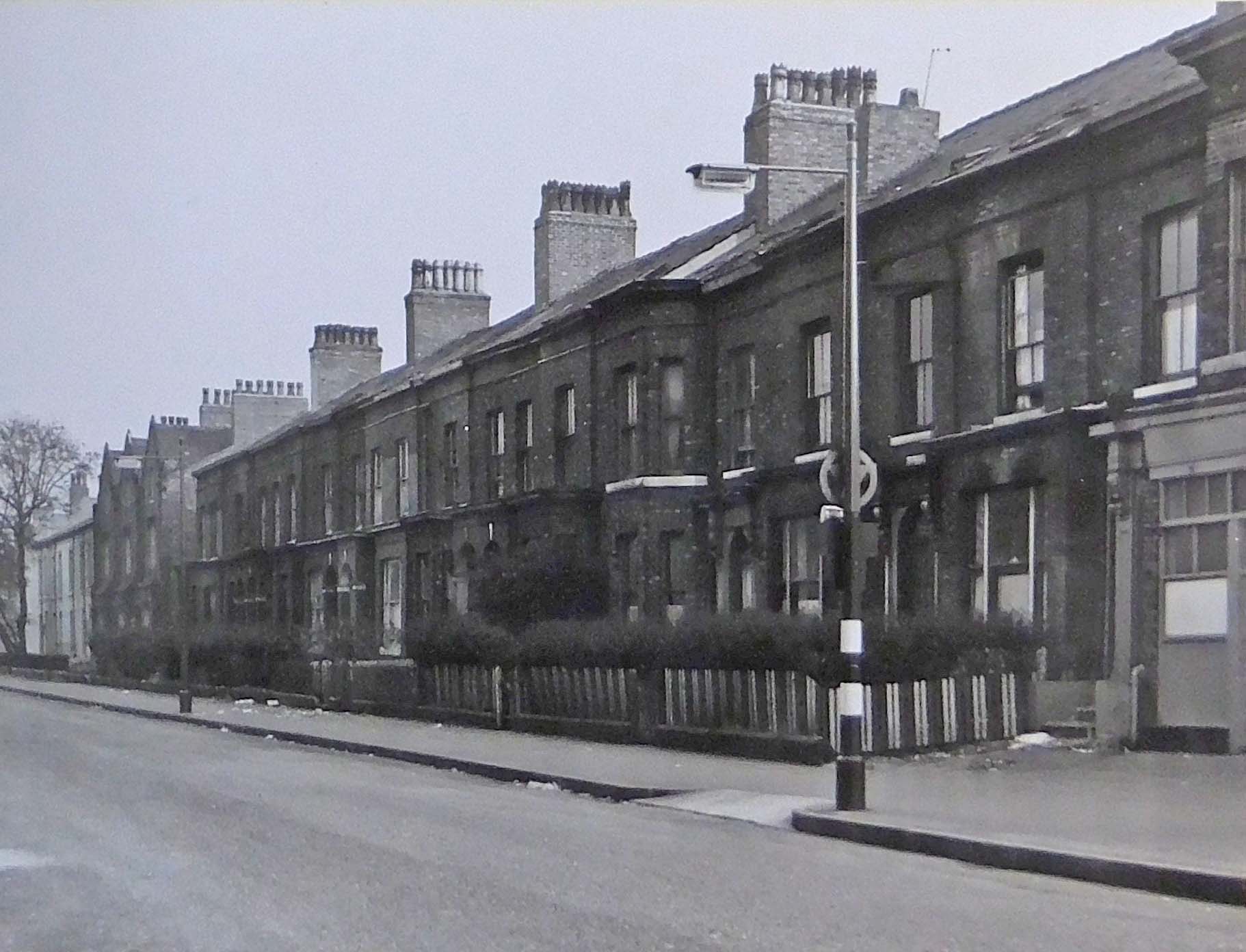
Ground Floor 83 Shakespeare Street
A man that had been living in the ground floor of 83 Shakespeare Street said that he had never seen David Earp before. He added that he rarely went to the top landing and didn't go up on the Monday, Tuesday, Wednesday or Thursday, 21 to 24 October 1963. At the time he was interviewed he was living at 19 Richmond Grove East in Manchester and stated that it was his intention to leave the country on 15 December 1963 and return to Pakistan, taking his two children with him.
The man's 13-year-old daughter said that she made the underskirt found by the police, exhibit 78, from some yellow nylon material and that the white layers of the underskirt were made from a roll of net curtain material that her father had bought, noting that she made it around April 1963. She said that when she made it she cut off two bits off the bottom part of the underskirt and that she handed one of the bits, exhibit 79 to the police, but was unable to find the other piece. She said that after she originally cut them off that she gave them to her little sisters to play with.
She added that the exercise book, exhibit 76, had belonged to her and had her writing in it. She said that it had been a schoolbook of hers and that when she had lived at 83 Shakespeare Street that she had kept her books on the window ledge in the kitchen on the ground floor but that she lost two of her books, exhibit 76 being one of them.
She noted that her father owned the Alsatian dog.
She said that she knew the retired man but had never been in his room, although she had waited outside before and that she had never spoken to him whilst he was in his room and she was outside.
She said that on Wednesday 23 October 1963, that she had been playing with a friend of hers in the backyard and letting off fireworks. She said that she recalled seeing the retired man that night, first when he was at the window of his room when he shouted at them to stop making a noise and the second time when he came down to the back yard. She noted that he had not been dressed properly and just had his overcoat on and that she thought that that had been between 8pm and 9pm.
The man's 9-year-old son said that he had been into the retired man's room about five times when he went to get the dog.
Owner of 83 Shakespeare Street
The owner of 83 Shakespeare Street, had at the time of his interview been serving a prison sentence in HM Prison Manchester, which was passed on him on 18 October 1963.
He said that up until that point he had been living at 83 Shakespeare Street on the ground floor with his family. He said that he bought the property in 1959, at which time it had already been used as a lodging house and the rooms were already partially furnished. He noted that he had been the owner of six lodging houses. He said that in January 1963 that he bought a quantity of mats from an auction which he placed in a pile on the top landing of the property outside doors of rooms 8 and 9, noting that he had not bought any coconut matting before that, but that such matting could have been in the house before he arrived.
He said that before he was sentenced, about eight weeks earlier, he had gone up to the landing and saw that there was a large carpet there, similar to exhibit 71, and also a few mats and a stair carpet.

He said that he knew the retired man who had been lodging at his house for about two years. He said that he had been very fond of his Alsatian dog and that he used to have it in his care during the day time and used to take it for walks in the mornings and also at dinner time, but that the dog was kept in a kennel downstairs at night, with the retired man bringing it down sometimes between 10pm and 11pm. He said that on occasions he went to get the dog himself.
He said that he had given the retired man dishes for the purpose of feeding the dog, but didn't give him the one labelled exhibit 16.
Chief Chemist
A chief chemist at the North Western Forensic Science Laboratory in Preston said that he examined the piece of material that was found in David Earp's mouth, exhibit 18 and compared it to two other pieces of underskirt, exhibits 78 and 79 and found that exhibit 18 had been cut from one of the layers of net material of the underskirt, exhibit 78 and that the other piece of material, exhibit 79, had been cut from the second of the two net portions of the underskirt, exhibit 78.
He said that he came to the conclusion because the two strips of material, exhibits 18 and 79, had uneven edges that corresponded exactly with the uneven edges of the underskirt, exhibit 78. He added that further, the fitting of the uneven edges was corroborated by the completion of the patterns woven into the material.
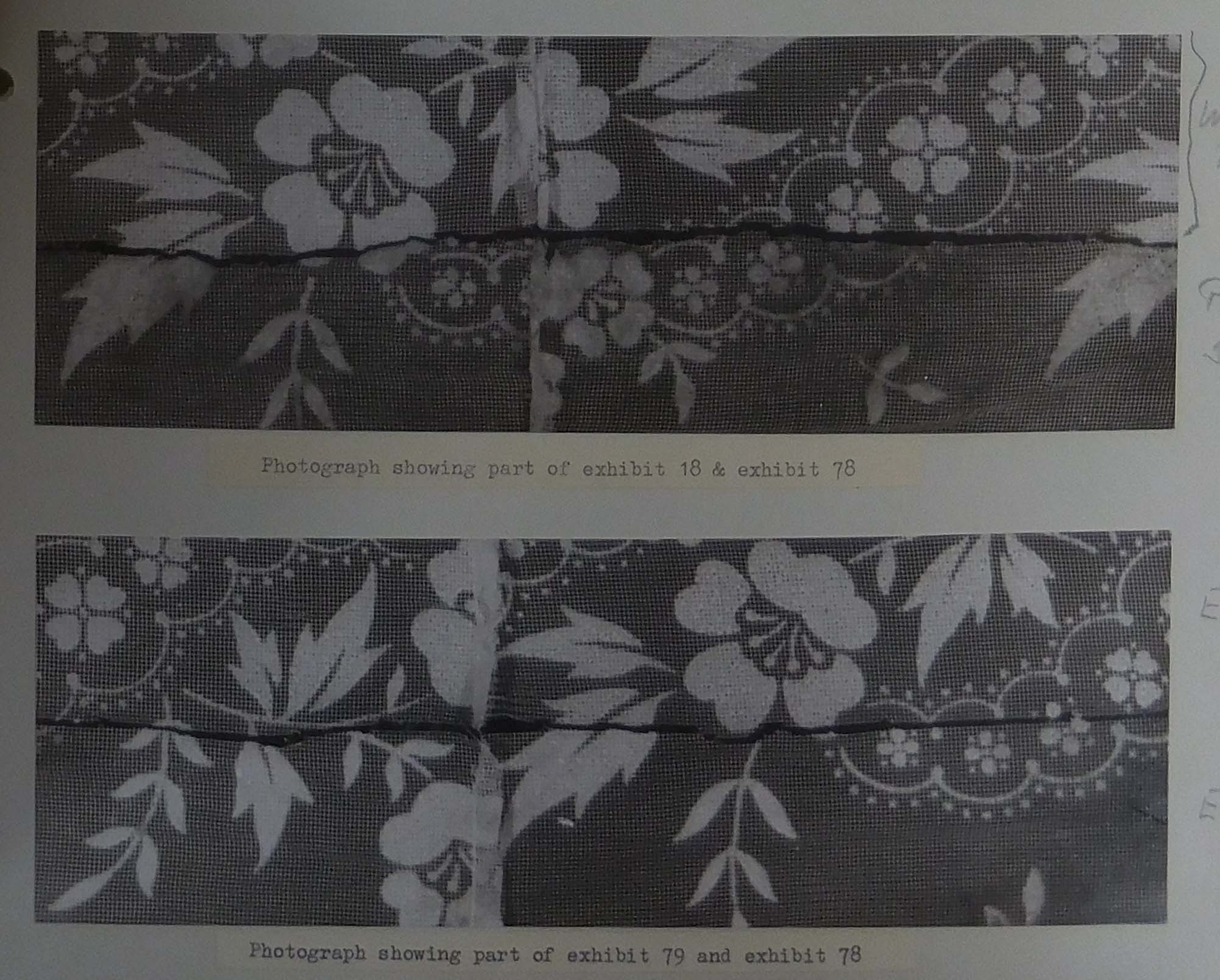
The chief chemist said that he also examined the horse, exhibit 13, and found that it was a match for the broken chariot, exhibit 11 that had belonged to David Earp and found by his mother in his room after his death. He noted that he himself found the horse in the bread bin in the retired man's room around midnight of 23/24 October 1963. He noted that it was not broken in the sense that a piece had come off, rather that it was an exact fit for the toy, and fitted in by means of two small projections into the harness of the chariot, and that it had clearly come out of its fitting.
Biologist
A biologist with the North Western Forensic Science Laboratory in Preston said that he examined a number of items for saliva, blood and dog hairs as well as other things. The dog hairs in particular were associated with the Alsatian dog that had belonged to the family on the ground floor and that which the retired man would often look after. Sample hairs taken from the Alsatian dog were labelled exhibit 83.
Dustman
A dustman employed by the Manchester Corporation Cleaning Department engaged with emptying the bins along Shakespeare Street said that he emptied the bins on that street on 21 October 1963 between 7.30am and 8am and that they would have all been emptied by at least 8.15am that morning.

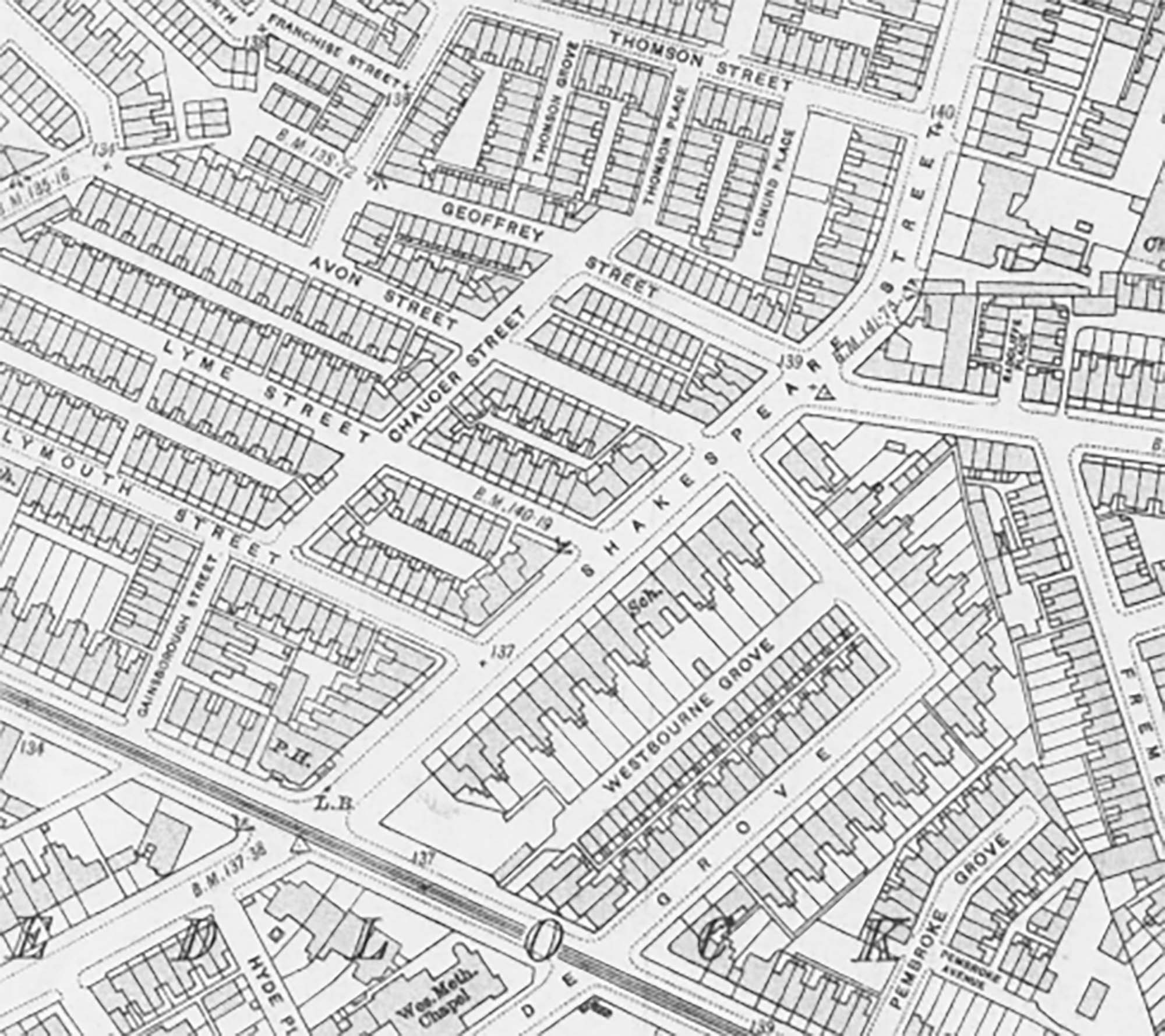
Fingerprint Department
A detective sergeant with the fingerprint department of the Manchester City Police said that he took fingerprints from David Earp, but had been unable to find any matching fingerprints in room 8, or anywhere else in the house that corresponded.
Man in Room 9
The man in room 9 said that he had been a night watchman and worked regular shifts, seven nights a week, starting at 7pm and finishing at 6am.
He said that on Monday 21 October 1963, that he left the address at about 5.30pm to go to work and returned the next morning at about 6.45am. He said that he didn't notice any carpet on the landing outside his room, noting that the landing was not lit. However, he said that he did recall seeing a white dish, many times, outside on the landing that was similar to exhibit 16.
He added that he did see a bit of a pillow similar to exhibit 19, which appeared to be on top of some rugs or something on the landing about a week before 21 October 1963.
He noted that his movements for the following Tuesday and Wednesday would have been about the same.
Man in Room 7
The man in room 7 said that he was also retired and picked his pension up on Monday 21 October 1963 after which he came home and paid his rent and did some shopping.
He said that at dinner time he went out drinking to the Shakespear up to 1pm. He said that he left 83 Shakespeare Street at 11.30am and that it was night time when he returned, about 11pm.
He said that when he came in he had a few words with the retired man from room 8 because his dog was barking a lot, noting that it was much more than normal and that after speaking to him about it he went to bed. The man that lived in room 5 in his statement noted that he recalled hearing the man from room 7 arguing with someone at that time, as did the man from room 4.
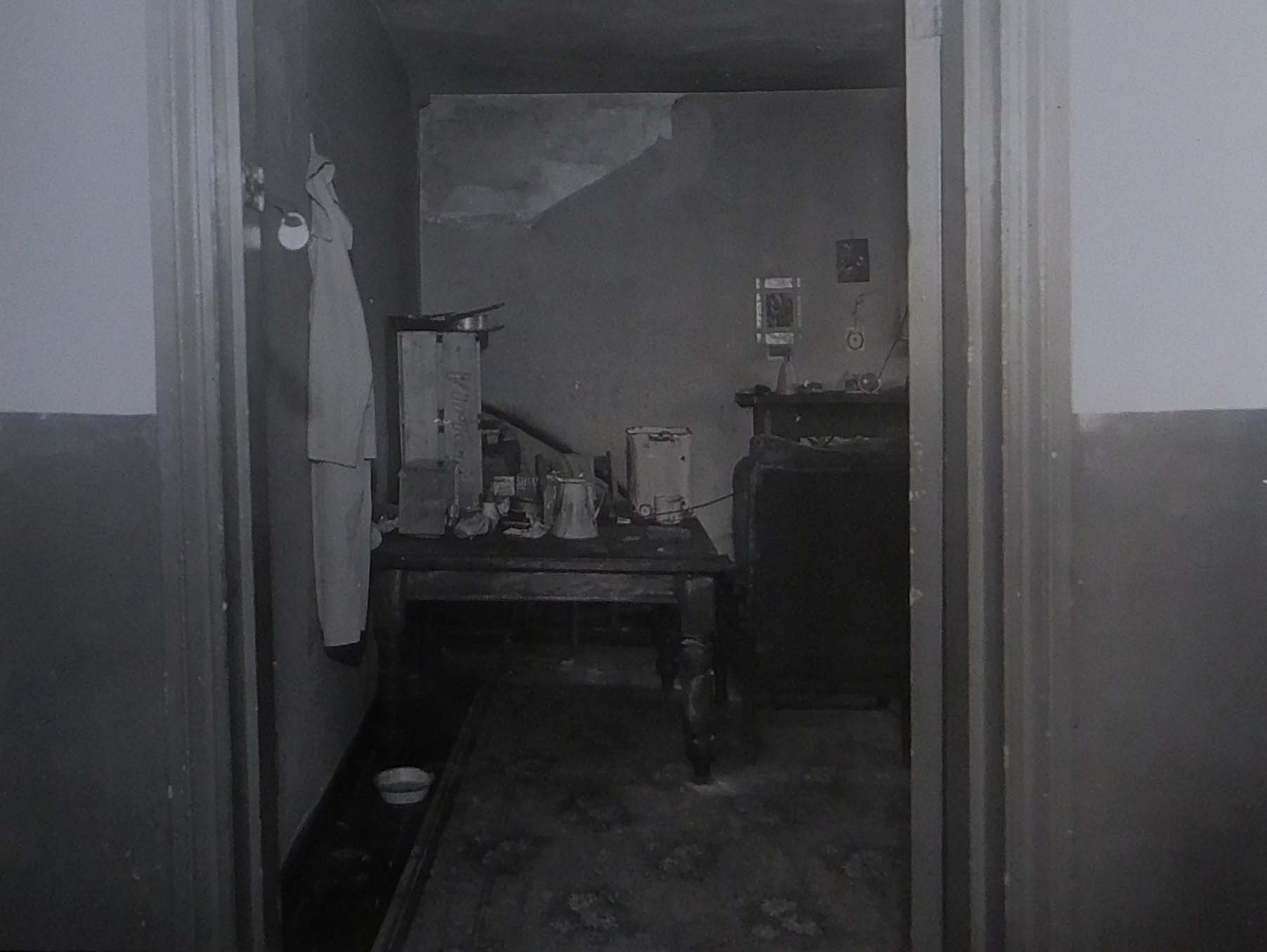
He said that on Tuesday 22 October 1963 that he was in all day, noting that his day out was on Monday when he would buy enough food to last him, and that he stayed in the whole day Tuesday and Wednesday and then on the Thursday went out for a loaf and a bottle of milk, but that otherwise he was in all that day also.
He noted that if he wanted water or to go to the toilet that he would go down to the next floor.
He added that he had not seen David Earp.
Detective Chief Inspector
A detective chief inspector said that at about 8.10pm on 24 October 1963 that he went to 83 Shakespeare Street and saw the body of David Earp on the top landing and that at 11pm that night he saw the retired man at Longsight police station along with a detective superintendent.
The following exchange took place:
Detective Chief Inspector: Do you know about this boy that's been missing from his home in Shakespeare Street since Monday evening?
Retired Man: I have read about it in the papers.
Detective Chief Inspector: Do you know that his body has been found on the landing outside your room.
Retired Man: I don't know about that, no one has told me that.
Detective Chief Inspector: The body was covered with carpets. Have you noticed the pile at all?
Retired Man: The landlord put a pile of carpets there about nine months ago but it's gone down since then. I had some carpets in my room but I threw them out about a month ago because they were covered with dog hairs.
Detective Superintendent: Well, have you noticed whether the pile has been bigger or smaller since Monday?
Retired Man: I haven’t bothered to look.
Detective Chief Inspector: Would you care to tell me where you were on Monday?
Retired Man: Well, I get up about seven every morning, I look after the landlord's dog you know. I take him for a walk then I come back. I go to the College on Oxford Road for a drink at dinner time, I go to bed usually about three and then about ten thirty I wake up and take the dog downstairs to the kitchen for the night.
Detective Superintendent: On Monday, did you go to the College at dinnertime and go to bed about three?
Retired Man: Yes, I went to the college about half past eleven. I stayed there until closing time, came straight home and went to bed. I had the dog with me you know, that's why I don't go out at night because I’m frightened. I always take the dog with me.
Detective Superintendent: Didn't you have anything to eat at all?
Retired Man: Yes, I think I had sardines on toast.
The interview ended then, but he was seen again at 12.30am on 25 October 1963 at Longsight police station, and the following took place:
Detective Chief Inspector: I have seen other lodgers in the house and it is said that you went out on Monday night because when you came home about 11pm you had a few words with the man from room 7 over the dog.
Retired Man: Did I? Oh, yes, I remember, I did. He said something over the dog and we shouted at each other but it's all over now, it was nothing.
Detective Chief Inspector: Yes, but had you been out? Because you told me you always went to bed about three in the afternoon.
Retired Man: Yes, I did go out, I went to the College about 7.30pm and came home after closing time.
Detective Chief Inspector: Did you have the dog?
Retired Man: Yes.
Detective Chief Inspector: Why didn't you tell me that you had been out on Monday night when I asked you?
Retired Man: I forgot.
When he was next seen at Longsight police station at about 4.30pm on 25 October 1963, the retired man was shown the exercise book, exhibit 76 and the following was exchanged:
Detective Chief Inspector: This was found in your room. Would you care to say how it came there?
Retired Man: Oh, yes, I saw it on the hallstand in the lobby some time ago. The little girl had been scribbling in it. I thought she had no use for it so I brought it up to my room. I have used those pages which she hadn't scribbled on for writing letters.
Detective Chief Inspector: Are any of the landlord's children in the habit of coming to see you in your room?
Retired Man: No, no, the landlord told me when I first went there not to encourage them or else they would always be 'mithering' me, no, no, they never came to my room.
The detective chief inspector noted that by 'mithering' that he understood the retired man to mean 'irritating'.
He said that later that day that the retired man then made his statement.
At about 11.15pm to 11.20pm the detective chief inspector received a call from the laboratory concerning the material found in David Earp's mouth and the following day he spoke to the retired man about it, and the following took place:
Detective Chief Inspector: I told you last night about a piece of lace being stuffed into the boy's mouth and a piece of lace which the landlords little girl left in the lobby and then could not find it. Do you remember?
Retired Man: Yes, I remember.
Detective Chief Inspector: Well I want to tell you that the piece of lace that the little girl could not find was the piece of lace which was stuffed into the dead boy's mouth.
Retired Man: I don't know about that. The piece I found was crocheted lace.
Detective Chief Inspector: I am going to charge you with the murder of the boy.
Retired Man: That's up to you.
When he was charged, he said:
The retired man appeared at Manchester Crown Court on Friday 13 December 1963 but was discharged at the judges direction.
see discovery.nationalarchives.gov.uk
see National Archives - ASSI 52/1358
see Liverpool Daily Post (Welsh Edition) - Saturday 14 December 1963
see Liverpool Echo - Thursday 28 November 1963
see Liverpool Echo - Monday 28 October 1963
see National Library of Scotland
see Unsolved 1963